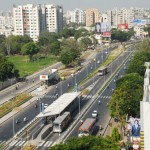 AHMEDABAD: The great Gujarati joint family is urging topend realty. Amid buzz of stagnancy in city’s property market, super luxury apartments are selling like hot cakes. Realtors may struggle to sell 2 and 3 BHK homes, but buyers, mostly large joint families, are lining up to book 5 and 6BHK flats. In large flats of 5-6BHK flats, old people of the families feel more comfortable rather in bunglows.
AHMEDABAD: The great Gujarati joint family is urging topend realty. Amid buzz of stagnancy in city’s property market, super luxury apartments are selling like hot cakes. Realtors may struggle to sell 2 and 3 BHK homes, but buyers, mostly large joint families, are lining up to book 5 and 6BHK flats. In large flats of 5-6BHK flats, old people of the families feel more comfortable rather in bunglows.
Take the case of ISCON group, which recently launched a residential scheme along SP Ring Road. While the entry-level three BHK flats generated least inquiries, all the top-end 5 BHK units were booked within days. “Those who could not get five BHK are going for 4 BHK units,” according to a survey. Looking at the response, Kotak now plans to convert 1 tower originally planned for entry-level flats into premium flats. Experts say the trend is inspiring as demand has been coming not only from NRIs and investors, also from local buyers who find Ahmedabad cheaper than other large Indian cities. “Moreover these flats offer security along with luxury.
Further, people who have stayed in 3-4 BHK and looking to upgrade are driving the demand for premium flats. So, no wonder 5-6 BHK apartments are being booked up like hot cakes,” says regional director (Gujarat) of real estate consultants. “A city based Businessman says that they sold off their bungalow and opted for a 5 bedroom flat because of security. He stays in that flat with his two sons. Ashish Shah of Shree Balaji Group got enormous response for the 5,100 sqft top-end flats as compared to other categories. Now, Shah plans to hold the remaining 6 BHK apartments till completion of project. “Demand for upmarket flats would remain high. Realtor Mukesh Goyal, who launched 4BHK scheme, for about INR 2 crore per unit at existing market rates, in Prahaladnagar around a year ago has already sold 80 per cents flats.
